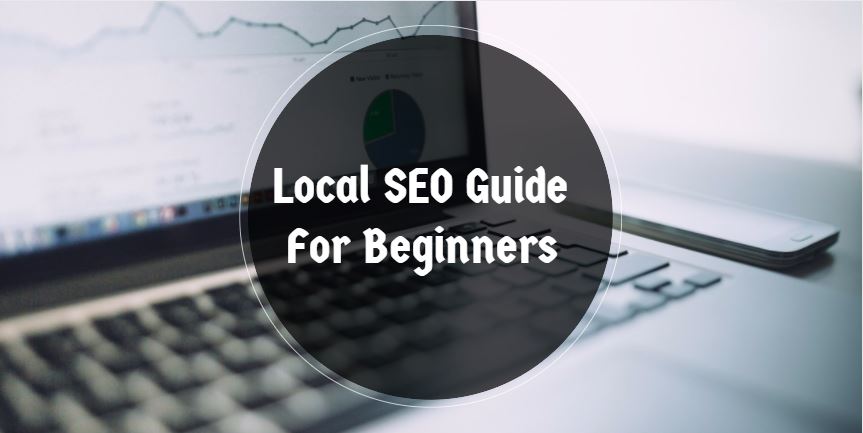Ahrefs Vs Semrush: Which Is The Better SEO Tool In 2025?
Apr 08, 2025

Apr 08, 2025

Mar 29, 2025

Mar 29, 2025

Mar 29, 2025

Mar 29, 2025

Mar 29, 2025

Mar 27, 2025

Mar 27, 2025
Sorry, but nothing matched your search "". Please try again with some different keywords.


Similar to systematic SEO, local SEO possesses a lot of misconceptions about tactics, strategy, and what needs to be happening after putting a campaign together. With this post, you need to dispel the misconceptions and myths by going through all parts of the process until the end, starting by analyzing the local competition. From there you can start learning about SEO building blocks: technical SEO, keyword targeting, links, and content.
When approaching an SEO endeavour, whether you are going to be doing this yourself or outsourcing the work to an SEO Company, it is advisable to approach it with the mindset of not playing Google, but the use of holistic optimization, white hat, and best practices that will make the site stand the test of time.
An analysis of local competition will either break or break your local SEO campaign. When you analyze your competition, you will find out the most crucial things they are doing to attain organic results. From this analysis, you will move forward understanding that the info you possess will assist you to achieve the desired results. By looking at the content, it is possible to know the topics that the competition is talking about, the number of words being written on average, and the frequency of updating their content. When you thoroughly look at the content, you will have an understanding of the things they are doing for you to adopt a strategy and beat competitors.
Recommended reading: Developing a Content Marketing Strategy
When you look at links, it becomes possible to figure out the number of links the competition is getting, the kind of links, the source of the links, the frequency of getting the links, and when they get the links. When you look at on-site aspects like on-page optimization, it is possible to develop a strategy that will outlast the local strategy. The aspects you will analyze in the local competition analysis will assist you to come up with a winning strategy.
By focusing on your niche, market, and locale, you will perform an in-depth local competition analysis. On the surface, the analysis will include factors like on-page SEO, links, and content. When you dive deeper, competition analysis needs to include the following so as to gain a picture of the competitiveness of the local market. You need to know that not all these factors will increase your ranks. Some will increase but they are here to assist you to create a local strategy that is winning based on all things the competition is doing.
The links you need include local SEO directories, Niche local sites, chamber of commerce links, editorial links, local.EDU links, content, and local.GOV links.
If people are getting to your site and filling forms out or signing up for the newsletter, that is a sign that the things you are doing are right. Those individuals are getting there and finding the site interesting enough to stop and leave their info. That is generally a positive thing but you cannot assume that Google would pick it up as a factor of ranking and use it to promote your site in search automatically.

The common on-page technical SEO includes schema.org coding for local SEO, CSS coding, validated HTML, locally optimized title tags, locally optimized URLs, locally optimized meta description, and locally optimized on-page copy with keyword and tight topical focus.
Local competition analysis needs to focus on top Google results. Carry out a search for your locality plus keyword phrases in the industry that are you focusing on.
You can use a combination of link analysis tools such as majestic, Google search console, SEMRush, Ahrefs, and Raven Tools; export all data; put together the data, and make an analysis of the link profile. It is recommended to use about three-link analysis tools because they do not possess all the available data. The things you are looking for in the link profile include:
What directories do the sites possess? What local links do the sites have, and what editorial local links do they have? Do the sites have chamber of commerce links? Do the sites have local .EDU or .GOV links?
Still, directories work as linking tactics when it is done with quality links and they do not appear to be spam. However, it is just a directory and it is self-explanatory. You need to look for directories that are not ad spam, meaning they do not have many ads above the fold, and the ads do not interfere with individuals or the individuals looking for the link. These directories are of high quality, generally clean, and can drive high authority link equity.
These sites are the ones located in the industry with local authorities on their topics. They are anything from charities to animal rights organizations to sites that help lend authority to your links. The major idea when looking for these links is to make sure they are not spammy and are of high quality in any way. These sites will also disguise themselves as local partners. You need to note that this is not an advocacy of link exchanges in any way because it is a bad idea. You need to create partnerships with other businesses so as to obtain links which will help your sites in the SERPS.
All you need to do is to gauge the feasibility of defeating the site in google search results. You do not copy the whole link profile. When you gauge ranking feasibility, it will be quite easy to determine the overall strategy for linking. The reason for not copying a link profile is that you may not have the person that can give you guidance along the way. In case you slip up and do optimization with a link of low quality, you might get a penalty for getting a lot of them. It is quite easy to continue with old habits after starting.
These links are essentially too good for local SEO. They give high authority, can refer your local business, and can be a great partner. However, it is crucial to note that each chamber of commerce link is a .GOV.
The links are anything from charities or government offices to local schools. The fact that they are .edu and .gov links is a major bonus. Things will not change regarding the weight of these links. They still have the highest quality in the market.
What is the content about, who is generating the content, why is the content being written, where is the focus of the content, and what is the timing of the content? When collecting data for competitor analysis, it is crucial to consider aspects like the person writing the content, the topics of the content, the timing of content production, how and where the content is being focused locally, and the reason for writing the content. All these factors will help in determining the content that will get onto your site and the next steps.
You need to note that John Mueller from Google has said that the content does not have too long for it to rank well. He wrote that there is no minimum length and number of articles per day that need to be posted or a minimum number of pages on the site. In many cases, quality has to be more than quantity. Google algorithms will try to find and recommend sites with high-quality content that is unique and compelling to its users. Do not fill the site with low-quality content but work on making sure that the site has the best in its niche.
The best practices of basic URLs are in the lead. This implies that you need to ensure that your site is crawlable from the local standpoint. When you are using niche keyword phrases that are highly targeted, you will have to use them in the URL as the name of the page. When the site is not technically accurate and crawlable, you cannot expect Google to rank it in the right manner.
You will realize that many SEOs say high-quality CSS coding and valid HTML do not matter. While Google does not have these requirements, high-quality coding does not matter and helps to rank a significant quality attribute. When you code in the correct manner, you will reduce the chances of the browser guessing the things you are making it render. When coding and developing a site well, you reduce the browser render speed and the page speed. The page load time is a big factor in the ranking factors of Google.
Regardless, CSS coding and validated HTML of high-quality need to be the end result of the development work of your site. The site if the competitors when doing competitor analysis should not have this validation or the high-quality coding in its framework, then you will be possessing an attribute you can use against them. You need to ensure that the page speed and coding is better than that of competitors in each area in terms of optimized coding that will make the bottlenecks of the server non-existent.
This coding needs to be on all sites with schema data types of info on it. It is important to attain that site to appear in rich carousels and snippets of Google’s search results. If the sites do not have this coding for the data types present on your site, you get a useful ranking tool that you can optimize for your benefit.
Each site undergoing optimization on a local basis needs to have locally focused URLs, Meta tags, and Meta descriptions. What is the meaning of locally focused? It means that you are optimizing for phrases of keywords like the “Garden Grove personal injury lawyer” you need to be using the name of the city in the target keywords.
In competitor analysis, you need to be looking for competitors that may not possess a locally optimized copy with topical and keyword focus. It will tell you the competition strategies regarding on-page optimization.
In case you want to get in-depth competitor research, it is recommended to perform an audit of the competitor site with the screaming frog tool. You need to set it to your desired specifications, crawl into the sites of your competitors, and after exporting the excel spreadsheet, you will have to filter all the data out to show only the URLs, meta descriptions, and titles.
Checking this data will give you info on what your competition is doing on the site and help you make a better one.

Image SourceYou need to start with keywords that are locally focused that local clients are searching. Topical and keyword relevance are crucial factors to ensuring that your optimization is fully optimized and targeted. After performing the keyword research, you need to choose those ones that possess a good search volume, lower competition, and those that are highly targeted in your niche.
When doing this kind of keyword research, it is crucial to consider the market size also. When you take a sample of a market size like Los Angeles, you might be in for an awakening when you promise clients that they will rankings in Los Angeles in three months. This will not happen because you need almost one year to achieve first-page results in Los Angeles. And this is an assumption that you possess all it takes to fight competition in the optimization efforts and link acquisition.
Lower competition, good search volume, and highly searched keywords are like diamonds in the rough. These phrases will bring sought-after improvements to the important metric for clients, which is conversion. While low competition might be nice, the search volume on Google needs to be at the top of the list when performing local keyword research. A higher volume implies a high interest in local keyword research. A higher search volume may get you lucky conversions. However, that luck will eventually run out. Solid research needs to be at the helm of all SEO endeavors.
Highly targeted keywords in your niche are the ones that target people that are doing searches for particulars in your industry. You need to dive deep into the details of your industry when unearthing the keyword gems.
This summit consists of industry experts that share their latest tactics and successes in getting ahead of the competition. In case you know individuals that perform searches for particular items in the industry, there are usually questions and intentions behind the searches. By thinking and analyzing the intentions of the searches, it is easy to come up with a keyword list that has questions about the topics you can use to build deep topical pages. These pages will be real converters for clients. The reason behind this is figuring out what the keywords will do for the clients.
When you use these keywords, you will build an editorial calendar that focuses on these topics. After having these ideas and plans with set goals to create the articles by date, you will start driving the performance of local SEO through the keyword phrases.
This is just one solution among many. You can use this method to come up with your methods for developing an interactive and focused keywords list. You will develop content from these phrases that even industry-savvy regulars will like. This will help you achieve the success metrics your clients can focus on.
It is crucial to discuss things you should not do when discussing what to do. Bad habits sometimes do creep in that you should avoid when doing proper SEO. They include keyword stuffing, Wikipedia-type content, not being unique with content, and not focusing on the content. As a beginner in local SEO, you need to avoid the Wikipedia-type of content. The problem with using this content is that it has been done a billion times already. Every industry does it. The quality of this content type is diluted as a result of millions of copy-pasting and low-value production.
The best thing to do is take the content, perform the search, rewrite it in a quality manner, and provide something with a unique value for the readers to enjoy. You need to focus on exciting the reader.
Just like creating keywords with a local focus, it is crucial to create content with a similar focus in the mind. You need content to aspire to the local focus content niche and the industry of choice. This content needs to be specific and highly targeted, being tailored to the resultant SEO goal in the mind. You do not create text-based content when it is necessary to create videos. You do not create a lot of content for sites that people search for brick-and-mortar businesses.
The key is tailoring the content to a niche that has a topical and local focus which creates a quality experience for the users searching these topics. It is pointless to create uninteresting and bland content that is similar to Wikipedia content. Put a lot of effort and thought into the content and ensure it fulfills all the goals and the end SEO goal.
It is easy to fall into the trap of creating similar content for different sites. When you create localized content, you need to ensure that all pages are unique to give you value. Uninteresting content will not be a good strategy and you may end up getting a slap from Panda.
Creating the same content for different sites is yet another pitfall. This may happen if you are using an agency that has many clients in one niche. For instance, in the law industry, it will be tricky and challenging to generate unique content where there are a few ways of saying things about law. However, by working on coming up with stellar, unique content ideas, you will not have to keep coming up with content that sounds awful. It is advisable to stay natural, and conventional, and avoid stuffing keywords in your content.
The latest Google updates, when being publicly discussed by RankBrain, cover all things that have been said for the last fifteen years. They are: focus on the user, write the content naturally, and do not stuff keywords.
It is a novel signal but the reason for asking about the optimization of RankBrain is because you do not ask. It is all about ensuring the user accesses the deserved result for the query. When you write in the natural language, you become set. If you stuff keywords in your content, it will not be good for you.
Ranking factors for local SEO are typically centered around the off-page and on-page factors with a focus on local. Similar to content, links are a crucial part of all SEO ranks. Before beginning, it is crucial to perform an analysis of the website to figure out its locality. You can use tools like Brightlocal or Whitesparks to assist you with the local analysis of the profile of the link.
Recommended reading: SEO Tools: The Complete List
In case you already have local citations, you know where you need to be before getting the others. However, if you have never acquired a link, it becomes a daunting task to follow all the local citations.
When obtaining local SEO citations and claiming your local profiles, it is crucial to ensure that the NAP info is similar. Do not use #, Ste., and Suite in the instances of submitting info on the site. This will not result in improved performance, as a matter of fact, it might sink your ship as it introduces a lot of noisy ranking signals. You need to ensure that your citations and links are very strong.
When starting out with the claims of local SEO citations, you may be asking yourself where to start. You do not have to sift through the performed research about competitors and look at their link profiles. When you examine these links well, it becomes a good way of figuring out the local competition you should be using. You need to know that not all sites will have local business addresses and other regular domains.
It is, therefore, recommended to use in-depth competition research with the right tools above.
Nothing is one hundred percent different about local SEO from organic SEO. You still have content, keywords, and links when doing your optimization. The difference is where local SEO comes into play.
It is crucial to approach these strategies with a holistic, white hat, and relationship building in the mind. Taking a wrong approach in any of these tactics is a strong-arm approach that will result in penalizing your site. Focus on acquiring links, and manipulating. Focus on delighting the user, and not keyword stuffing. Your focus needs to be on creating a compelling user experience. If you built your SEO with enough quality, people will continue coming.
Mashum Mollah is the feature writer of SEM and an SEO Analyst at iDream Agency. Over the last 3 years, He has successfully developed and implemented online marketing, SEO, and conversion campaigns for 50+ businesses of all sizes. He is the co-founder of SMM.
View all Posts
Ahrefs Vs Semrush: Which Is The Better SEO To...
Apr 08, 2025
How Data-Driven Hiring Reduces Costs and Impr...
Mar 29, 2025
Why Headless CMS Works Well for EdTech Startu...
Mar 29, 2025
Building Topical Authority to Excel in Search...
Mar 29, 2025
The Impact of Professional Recruitment Servic...
Mar 29, 2025

